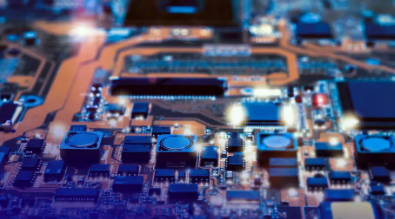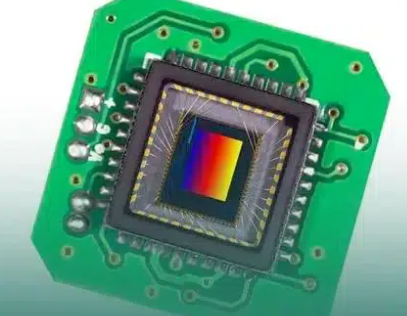China Forecast to Miss Chip Targets
China’s ambitious drive to expand its semiconductor industry will fall far short of its targets, according to Bill McClean, president of IC Insights. In the short term, 2018 will be a good year for the global chip industry, despite the ups and downs of the DRAM market and capital spending, he said.
China will fill 15 percent of its semiconductor needs in 2020 and perhaps 20 percent in 2022, McClean predicts. That’s significant growth, but far from the targets of 40 percent in 2020 and 70 percent in 2022 that the China government has set.
The goals are “just ludicrous…China taking over the rest of the world in IC production is not happening,” McClean said at an annual talk here.
The country has pledged as much as $120 billion to fund its chip industry, in part because it spends more on importing semiconductors than on oil. But McClean expects only about 10 percent of those funds will be spent over the next three years on capital equipment.
He pegged China IC production in 2022 at $33.6 billion, 7.2 percent of the worldwide total, up from five percent last year. “Even with some upside, China will still make less than 10 percent of the world’s production by 2022…I could see China getting 10 percent of the DRAM market, but not taking big chunks out of Micron, Samsung and SK Hynix,” he said.
McClean believes Samsung’s decision to spend $26 billion on capex last year — more than twice its average — was motivated largely by China’s ambitions. “They are firing the first shot against the China companies. They want to get so much capacity it will shut them down immediately,” he said.
Samsung's capex investment, announced last fall, is more than Intel and TSMC spent on capex combined. “It was one of the most amazing things I’ve seen in the industry,” said McClean who started his career as an analyst 38 years ago.
“Maybe I’m too skeptical. Some say China will do what it did in steel and other industries, but chips are not the same thing — 18nm DRAM technology is not easy to master,” he said.
China is expected to consume 43 percent of the world’s ICs in 2022, up from 38 percent last year. That includes big assemblers such as Foxconn making iPhones in China for world markets. DRAM is the biggest part of China’s spending, about $27.5 billion last year, McClean estimated.
SK Hynix owns the biggest fab in China by far, a DRAM operation in Wuxi expected to kick out $8.4 billion in memories by 2022. Samsung is a distant second, expanding its 3D NAND production in China to an estimated $6.1 billion by that year.
“Of the top six IC makers in China, only two are Chinese companies,” McClean noted.
SMIC is a distant third, reaching $4.6 billion in 2022. XMC is expected to rise from eighth to fifth as part of the new Yangtze Memory Technology Corp. (YMTC), hitting $1.8 billion that year.
In 2006-7, China fabs took 13.3 percent of the pure-play foundry market. McClean doesn’t expect them to return to that level now that Samsung, Globalfoundries and Intel are gunning for share.
As for memory, Tsinghua Unigroup announced plans to spend $30 billion on YMTC to make 3D NAND and eventually DRAM. However, the spending comes in phases and “I don’t think it’s all going to hit… if they only get 50 percent utilization of first phase, they won’t do the next phase,” he said.
McClean expressed doubts YMTC’s partner, Spansion, which is now part of Cypress, has the memory technology the China fab will need. Similarly, he believes UMC’s embedded DRAM, said to be the basis for products at Jin Hua Integrated Circuit Co. (JHICC), and ISSI’s memory technology to be used for mobile DRAM at a $2.7 billion fab called Innotron, will prove insufficient.
Micron sued UMC for trade secret violations as part of its JHICC partnership. “This is just the start” of patent disputes, to come, McClean said.
After ZTE was fined a record $892 million for shipping systems to Iran, and Tsinghua Unigroup made a bid to buy Micron in 2015, “all the governments are on high alert.” China’s opportunity for purchasing chip technology has largely “faded away,” he said, noting a failed effort to buy Lattice.
Overall, chip sales could hit $393.93 billion this year, up another eight percent from last year’s unusually high 22 percent growth. Unlike the 58 percent surge largely in memory prices in 2017, this year’s rise should be based on unit growth and more evenly split among logic, analog and memory.
“I think it’s going to be a good year,” McClean said.
“Overall the China economy is relatively healthy, and all the largest markets — PCs, smartphones... are in China — so a healthy China market is key to a healthy market overall,” he said.
Chips will rise again in 2019 to hit $416.6 billion before semiconductor and world economic markets are expected to have a correction of unknown magnitude. “We expect a cyclical slowdown in worldwide GDP in 2020, but it’s unclear when it will come,” he said.
DRAM prices rose an “incredible” 60 percent last year while unit production fell. Overall memory ASPs should only rise another 5 percent this year, IC Insights predicts.
“I think we will see DRAM pricing tone down a bit because it’s starting to impact customers negatively — China’s smartphone companies are complaining to their government about Samsung,” he said.
Both DRAM and 3D NAND are forcing big increases in capex. Western Digital showed estimates of at least a five-fold rise in cost per wafer moving from planar to 3D NAND.
The memory surge boosted Samsung past Intel by just $100 million to become the top semiconductor company last year. “It’s more a case of Samsung doing well than Intel doing poorly,” McClean said, noting the South Korean giant’s steady rise to a 13.9 percent market share in chips last year from 3.8 percent in 1993.
Overall, industry capex could be up or down 8 percent based on whether Samsung continues to spend 40 percent of sales or goes back to average levels. China may pick up the slack in capex, and Toshiba is expected to surge its spending this year after keeping a lid on during its tumultuous 2017, he said.
Finally, McClean predicted either Qualcomm will buy NXP or Broadcom will by Qualcomm.
“I thought Broadcom might have a good chance, but if Qualcomm buys NXP that’s a big fish to swallow with questions of a monopoly — it gets more difficult,” he said.
Qualcomm becomes a $26 billion company with NXP, the largest semiconductor acquisition announced to date. McClean expressed surprise the EU recently approved the deal, potentially leaving just two chip vendors based in Europe.
If China gives its approval to the NXP deal, the world’s largest fabless company would suddenly own seven fabs.
“Qualcomm is excited to have fabs as a new toy to play with, so I think they will keep or expand them. It will shake up the whole fabless/IDM thing,” he said.
在线留言询价

Microsoft Unveils In-House AI Chip, Poised for Competitive Edge with a Powerful Ecosystem

What is digital chip? What is analog chip?
- 一周热料
- 紧缺物料秒杀
| 型号 | 品牌 | 询价 |
|---|---|---|
| RB751G-40T2R | ROHM Semiconductor | |
| TL431ACLPR | Texas Instruments | |
| BD71847AMWV-E2 | ROHM Semiconductor | |
| MC33074DR2G | onsemi | |
| CDZVT2R20B | ROHM Semiconductor |
| 型号 | 品牌 | 抢购 |
|---|---|---|
| ESR03EZPJ151 | ROHM Semiconductor | |
| IPZ40N04S5L4R8ATMA1 | Infineon Technologies | |
| TPS63050YFFR | Texas Instruments | |
| BP3621 | ROHM Semiconductor | |
| BU33JA2MNVX-CTL | ROHM Semiconductor | |
| STM32F429IGT6 | STMicroelectronics |
- 周排行榜
- 月排行榜
AMEYA360公众号二维码
识别二维码,即可关注


请输入下方图片中的验证码:
























